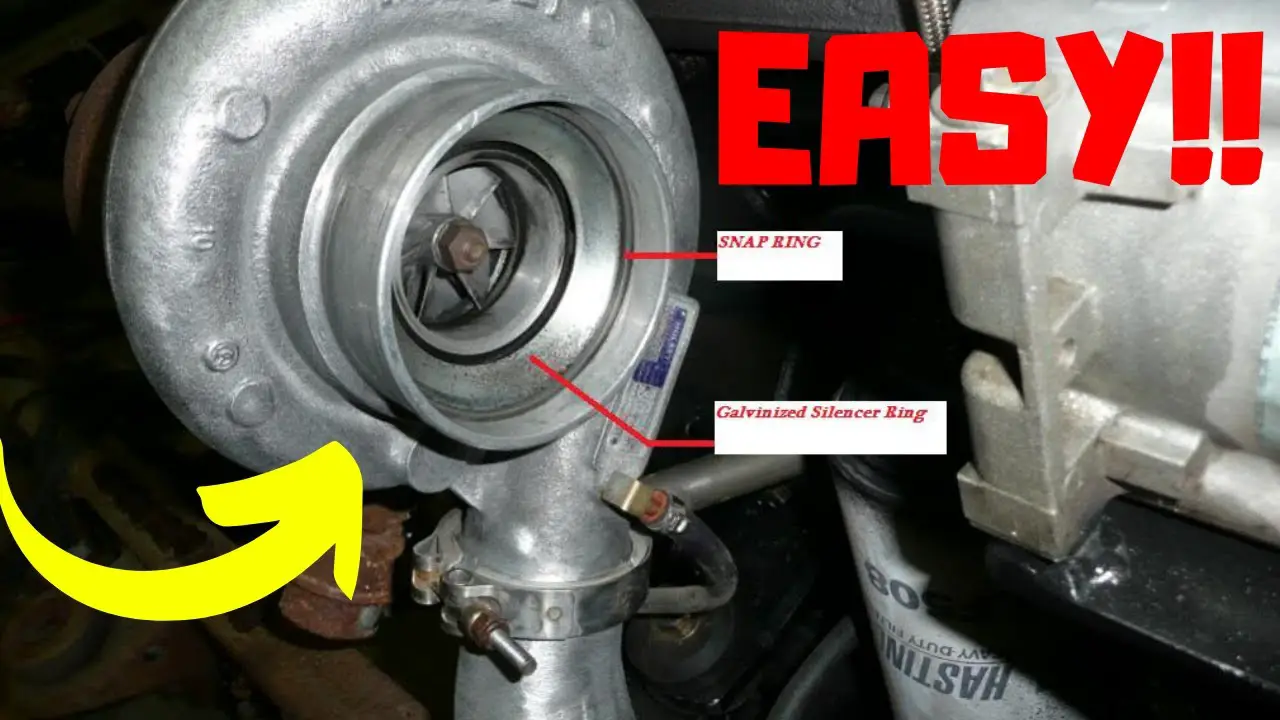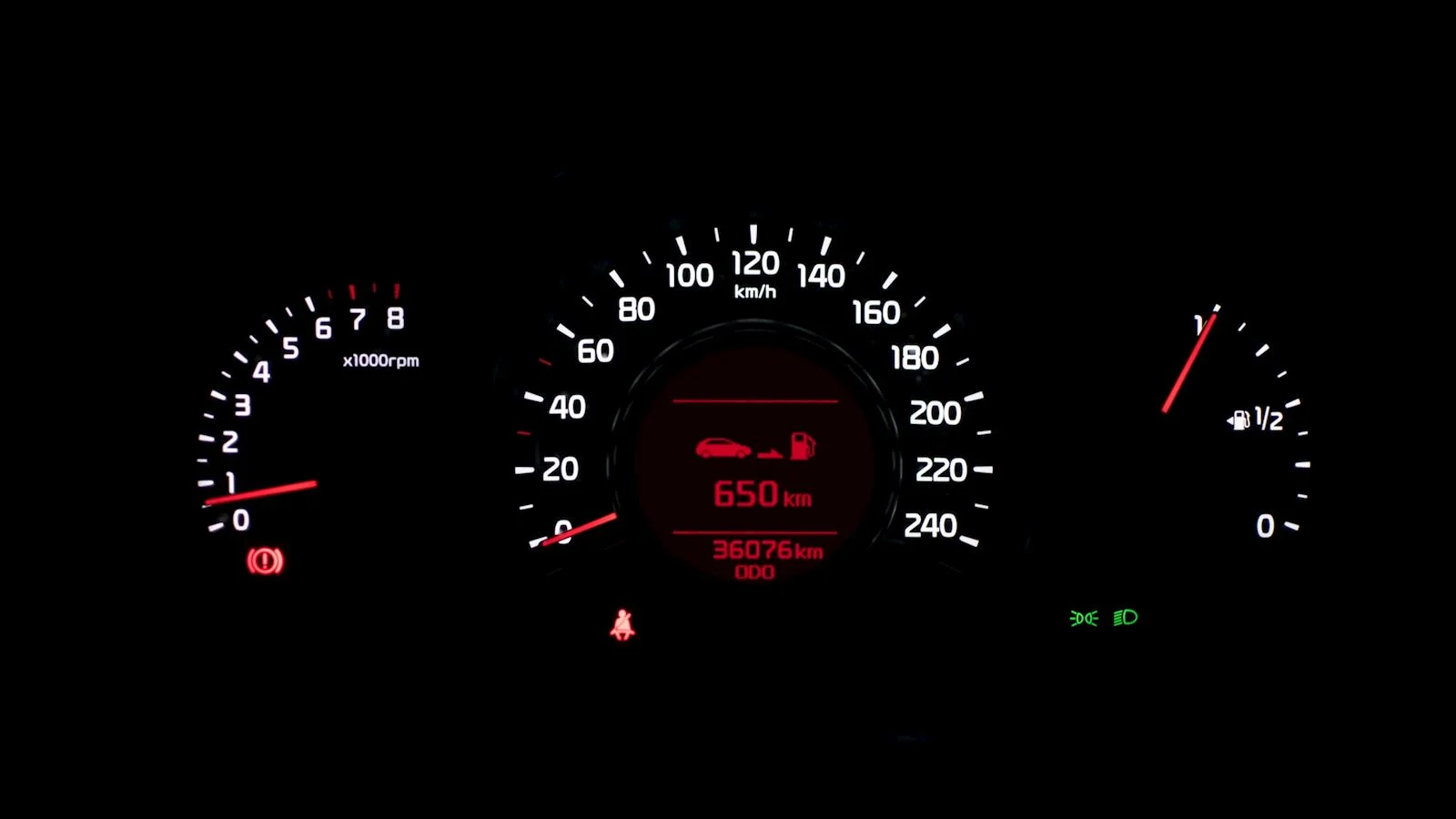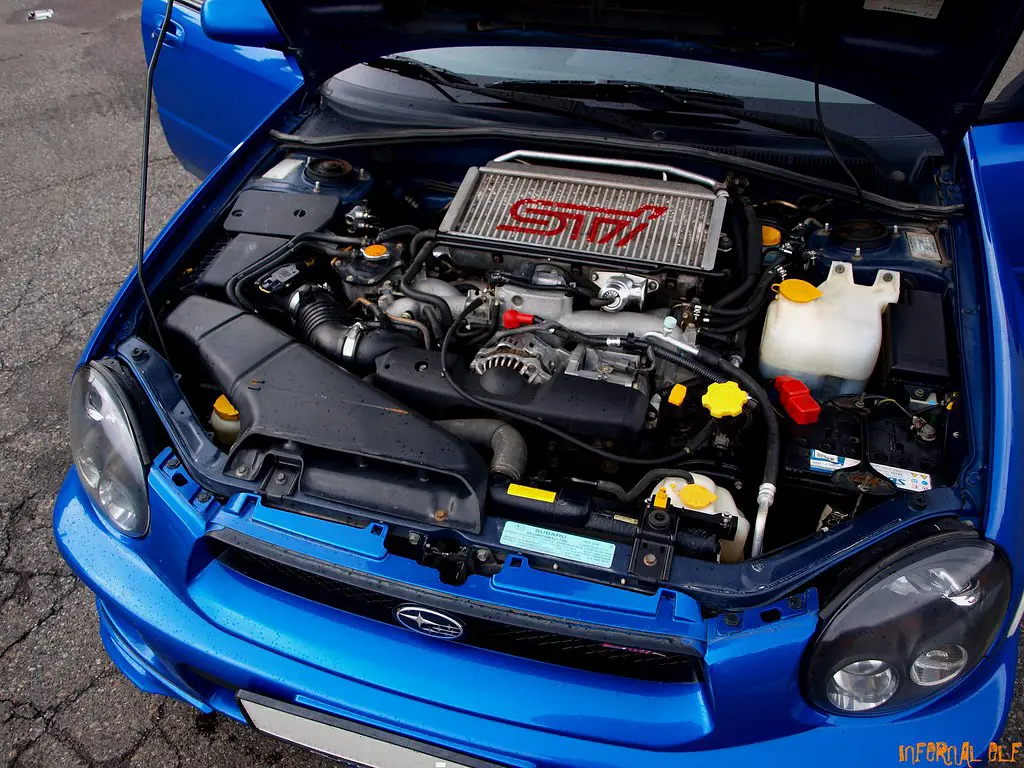If you’re looking to add some extra oomph to your 6.7 Powerstroke Turbo, you might be wondering how to make it louder.
Fortunately, there are a few simple steps you can take to achieve this effect without compromising the performance or reliability of your engine.
One way to make your turbo louder is to install an aftermarket exhaust system or adjust the wastegate.
Another option is to increase the exhaust flow or alter the wastegate settings, which can enhance the turbo sound.
A louder turbo can provide a more aggressive and sporty engine note, adding a touch of excitement to your driving experience.
In this article, we’ll explore some effective techniques to make your 6.7 Powerstroke Turbo sing a little louder.
From installing an aftermarket exhaust system to tweaking wastegate settings, these methods will help you achieve the desired effect.
Let’s delve into the world of turbo noise and find out how to make a 6.7 Powerstroke Turbo louder! 🚗🔊
How to Make A 6.7 Powerstroke Turbo Louder? – Easy To Follow Steps
Let’s dive into the details of how to make a 6.7 Powerstroke Turbo louder. There are several ways to achieve this effect, and I’ll describe some of the most effective techniques below:
1: Install an aftermarket exhaust system
Installing an aftermarket exhaust system involves replacing the stock exhaust components of your vehicle with upgraded, aftermarket parts. This process is popular among automotive enthusiasts who seek to enhance the performance, aesthetics, and sound of their vehicles. Here’s a detailed explanation of the steps involved in installing an aftermarket exhaust system, specifically to increase the sound of a turbocharged engine:
Steps to Install an Aftermarket Exhaust System
1. Research and Choose the Right Exhaust System
- Research different aftermarket exhaust systems available for your specific make and model.
- Consider factors such as material (stainless steel, titanium, etc.), design, and brand reputation.
- Select an exhaust system that aligns with your preferences for sound, performance, and budget.
2. Gather Necessary Tools and Equipment
- Ensure you have the required tools, such as a jack, jack stands, wrenches, a socket set, and potentially a saw or cutting tool depending on the installation requirements.
3. Safety Precautions
- Use safety gear like gloves and safety glasses to protect yourself during the installation process.
- Work in a well-ventilated area to avoid exposure to exhaust fumes.
4. Raise the Vehicle
- Lift the vehicle using a jack and secure it with jack stands to create a safe working space underneath.
5. Locate and Remove the Stock Exhaust System
- Locate the exhaust system components, including the muffler, catalytic converter, and pipes.
- Use a wrench and socket set to remove bolts and clamps securing the stock exhaust system in place.
- Carefully disconnect the exhaust hangers to free the system from the vehicle.
6. Install the Aftermarket Exhaust System
- Follow the manufacturer’s instructions for installing the new exhaust components.
- Start by fitting the new pipes and mufflers in the same locations as the stock system.
- Use the provided clamps and hardware to secure the new components.
7. Adjustments and Modifications
- Some aftermarket exhaust systems may require adjustments or modifications for a proper fit.
- Use cutting tools if necessary to trim pipes to the correct length.
8. Tighten All Connections
- Ensure all bolts, clamps, and connections are tightened securely to prevent leaks and rattling.
9. Lower the Vehicle
- Carefully lower the vehicle from the jack stands.
10. Test the System
- Start the engine and listen for any unusual sounds or leaks.
- Check for proper alignment and clearance of the new exhaust system.
Note Regarding Sound Enhancement
- If the goal is to increase the sound of a turbocharged engine, components like a larger diameter exhaust pipe or a muffler delete pipe can be chosen.
- A larger diameter exhaust pipe allows for better exhaust gas flow, while a muffler delete eliminates the restrictive muffler, resulting in a more aggressive exhaust note.
Important Considerations
- Check local regulations and emissions requirements before making modifications to the exhaust system.
- Some modifications may void the vehicle’s warranty, so be aware of potential consequences.
2: Adjust the wastegate
Adjusting the wastegate is a tuning technique that can impact the performance and sound of a turbocharged engine. The wastegate is a critical component in controlling the boost pressure generated by the turbocharger. By adjusting the wastegate, you can influence the amount of exhaust gas that bypasses the turbine, affecting both boost levels and the sound produced by the turbo. Here’s a detailed explanation of adjusting the wastegate:
What is a Wastegate?
A wastegate is a valve that controls the flow of exhaust gasses to the turbine side of a turbocharger.
It helps regulate the boost pressure produced by the turbocharger, preventing it from reaching levels that could lead to engine damage.
The wastegate allows some of the exhaust gas to bypass the turbine, controlling the speed at which the turbo spins.
Steps to Adjust the Wastegate
1. Locate the Wastegate Actuator
- The wastegate actuator is typically mounted on the turbocharger or on the exhaust manifold.
- It is connected to the wastegate valve and is responsible for opening and closing the wastegate.
2. Understand the Current Setup
- Before making any adjustments, it’s crucial to understand the current wastegate setup and the factory specifications for your vehicle.
- Refer to the vehicle’s service manual for information on stock wastegate settings.
3. Access Wastegate Adjustment Mechanism
- Depending on the design of the wastegate actuator, there may be an adjustable rod or a threaded rod with a lock nut.
- Access the adjustment mechanism, which allows you to change the length of the rod.
4. Adjust Wastegate Rod Length
- To increase boost pressure and potentially enhance the turbo sound, you can adjust the wastegate rod.
- Lengthening the rod can increase the tension on the wastegate, delaying its opening and allowing more exhaust gas to drive the turbine.
5. Test and Monitor Boost Levels
- After making adjustments, start the engine and monitor the boost pressure.
- Use a boost gauge to ensure that the boost levels are within safe limits and do not exceed the engine’s capabilities.
6. Fine-Tune as Needed
- Fine-tune the wastegate adjustment as necessary to achieve the desired boost levels and turbo sound.
- It’s important to strike a balance, as excessive boost can lead to engine stress and potential damage.
Important Considerations
- Engine Safety: Modifying the wastegate should be approached with caution. Excessive boost levels can lead to engine damage. Ensure that you stay within the safe operating range specified for your vehicle.
- Professional Assistance: If you are not familiar with turbocharger systems or engine tuning, consider seeking the assistance of a professional tuner or mechanic.
- Legal and Emission Compliance: Modifying the wastegate or any other engine component may affect emissions and could violate local regulations. Ensure that your adjustments comply with the law in your area.
- Data Monitoring: Use tools like a boost gauge and engine monitoring systems to keep track of critical parameters and detect any issues promptly.
3: Increase the exhaust flow

Increasing exhaust flow is a common modification to enhance the performance and sound of a turbocharged engine. A key component in this process is the downpipe, which plays a crucial role in directing exhaust gases away from the turbocharger. Here’s a detailed explanation of how to increase exhaust flow to make your turbo louder:
1. Understand Exhaust Flow
- The downpipe connects the turbocharger’s exhaust housing to the rest of the exhaust system.
- Increasing exhaust flow involves reducing restrictions in the downpipe to allow exhaust gases to exit more efficiently.
2. Choose the Right Downpipe
- Research aftermarket downpipes that are designed for your specific make and model.
- Look for downpipes with a larger diameter, smoother bends, and fewer restrictions.
3. Install a Larger Diameter Downpipe
- A larger diameter downpipe allows for a better flow of exhaust gasses.
- Follow the manufacturer’s instructions to remove the stock downpipe and install the larger aftermarket one.
- Ensure that the new downpipe is compatible with other exhaust components.
4. Upgrade to a High-Flow Compressor Wheel
- In addition to the downpipe, consider upgrading the compressor wheel in the turbocharger.
- The compressor wheel is responsible for compressing air before it enters the engine.
- High-flow compressor wheels allow for increased airflow, improving overall turbocharger efficiency.
5. Professional Installation
- While installing a larger downpipe may be a straightforward process for some enthusiasts, it’s recommended to seek professional installation.
- Professional installers can ensure that the downpipe is properly fitted, and sealed, and does not interfere with other components.
6. Tune the Engine
- After upgrading the downpipe and, if applicable, the compressor wheel, consider tuning the engine.
- Engine tuning helps optimize the air-fuel mixture and other parameters to take full advantage of the increased exhaust flow.
Important Considerations
- Compatibility: Ensure that the aftermarket downpipe and compressor wheel are compatible with your specific turbocharger and engine configuration.
- Legal Compliance: Some regions have regulations regarding modifications to the exhaust system. Check local laws to ensure compliance.
- Engine Monitoring: Monitor engine parameters with tools such as an air-fuel ratio gauge to ensure that the modifications do not adversely affect engine performance.
- Manufacturer Guidelines: Follow the guidelines provided by the aftermarket parts manufacturer and, if applicable, consult your vehicle’s service manual.
4: Alter the wastegate settings
Adjusting the wastegate settings is a tuning technique that can influence the behavior of the turbocharger, impacting both performance and the audible characteristics of the turbo sound.
The wastegate regulates the flow of exhaust gasses to the turbine side of the turbocharger, controlling the boost pressure.
Here’s a detailed explanation of how to alter the wastegate settings to increase the turbo sound:
1. Locate the Wastegate Actuator
- The wastegate actuator is typically attached to the turbocharger and is responsible for opening and closing the wastegate.
- The actuator has an adjustable arm that connects to the wastegate valve.
2. Understand the Stock Wastegate Settings
- Before making any adjustments, it’s essential to understand the factory specifications for the wastegate settings on your vehicle.
- Refer to the vehicle’s service manual or consult with professionals who are knowledgeable about your specific make and model.
3. Access Wastegate Adjustment Mechanism
- Locate the adjustable arm or rod on the wastegate actuator.
- Some actuators have a threaded rod with a lock nut that can be adjusted.
4. Adjust Wastegate Actuator Arm Length
- To increase the pressure and velocity of exhaust gas and potentially make the turbo sound more aggressive, you can adjust the length of the wastegate actuator arm.
- Lengthening the arm can increase the tension on the wastegate, delaying its opening and allowing more exhaust gas to drive the turbine.
5. Test and Monitor Boost Levels
- After making adjustments, start the engine and monitor the boost pressure.
- Use a boost gauge to ensure that the boost levels are within safe limits and do not exceed the engine’s capabilities.
6. Fine-Tune as Needed
- Fine-tune the wastegate adjustment to achieve the desired balance between increased turbo sound and safe boost levels.
- Be cautious not to set the wastegate too aggressively, as excessive boost can lead to engine stress and potential damage.
Important Considerations
- Engine Safety: Modifying the wastegate settings should be approached with caution. Excessive boost levels can lead to engine damage. Ensure that you stay within the safe operating range specified for your vehicle.
- Professional Assistance: If you are not familiar with turbocharger systems or engine tuning, consider seeking the assistance of a professional tuner or mechanic.
- Legal Compliance: Modifying the wastegate may affect emissions and could violate local regulations. Ensure that your adjustments comply with the law in your area.
- Data Monitoring: Use tools like a boost gauge and engine monitoring systems to keep track of critical parameters and detect any issues promptly.
Will a cold air intake make my turbo louder?
According to some sources, a cold air intake can make your turbo louder and more aggressive.
A turbocharger is designed to help suck compressed air into the engine, and a cold air intake can increase the airflow, creating a louder, more aggressive revving sound every time you press the accelerator.
However, other sources suggest that a cold air intake doesn’t increase the turbo sound more than it already is.
So, the answer to your question is not definitive. It’s possible that a cold air intake could make your turbo louder, but it’s also possible that it won’t have much of an effect.
If you’re looking to make your 6.7 Powerstroke Turbo louder, you might want to consider some of the other techniques I mentioned earlier, such as installing an aftermarket exhaust system or adjusting the wastegate.
How much HP can a 6.7 Power Stroke make?
The 6.7 Power Stroke engine is a V-8 engine with a compacted graphite iron (CGI) engine block and aluminum cylinder heads.
The engine employs a high-pressure common rail fuel injection system, and a Bosch CP4 injection pump produces up to 36,000 psi of injection pressure through Piezoelectric fuel injectors.
The injection pump is fed by an electric lift pump that provides up to three times the required fuel flow rate to provide critical lubrication and cooling to the injection pump; unused diesel fuel is returned to the fuel tank in a continuous loop.
The 6.7L Power Stroke diesel engine can produce up to 500 horsepower and 1,200 lb-ft of torque.
6.7 Powerstroke Turbo Silencer Ring Removal
To remove the turbo silencer ring on a 6.7 Powerstroke, you can follow these steps:
- Disconnect the batteries.
- Remove the air intake system.
- Locate the turbocharger.
- Remove the bolts holding the turbo inlet to the exhaust manifold.
- Carefully remove the turbo silencer ring.
Removing the turbo silencer ring can improve turbocharger efficiency and increase performance.
It can also make your turbo louder, which can add a sportier and more aggressive tone to your engine’s sound.
6.7 Powerstroke Turbo Resonator Delete
To delete the turbo resonator on a 6.7 Powerstroke, you can follow these steps:
- Disconnect the batteries.
- Remove the air intake system.
- Locate the turbocharger.
- Remove the bolts holding the turbo inlet to the exhaust manifold.
- Carefully remove the turbo resonator.
Removing the turbo resonator can help improve turbocharger efficiency and increase performance.
It can also make your turbo louder, which can add a sportier and more aggressive tone to your engine’s sound.
If you’re looking to make your 6.7 Powerstroke Turbo louder, removing the turbo resonator is one of the options you can consider.
Also Read: Why Transmission Malfunction BMW: What Are Causes & Solutions!
Conclusion
Making your 6.7 Powerstroke Turbo louder is a fun and exciting project that can add a touch of personality to your driving experience.
By following the easy-to-follow steps outlined in this article, you can achieve a deeper and more noticeable engine sound without compromising performance or damaging your engine.
From installing an aftermarket exhaust system to adjusting the wastegate settings, there are several techniques you can use to enhance the turbo sound.
You can also consider removing the turbo silencer ring or turbo resonator to make your turbo louder.
Whatever method you choose, be sure to follow the instructions carefully and take the necessary precautions to ensure your safety.
With these tips, you’ll be well on your way to making your 6.7 Powerstroke Turbo sing a little louder!


![[SOLVED] What Is Check Emission System Acura MDX? - Solutions](https://carfixexperts.com/wp-content/uploads/2023/12/2022-Acura-MDX-Advance-Package-in-Fathom-Blue-Pearl.jpg)

